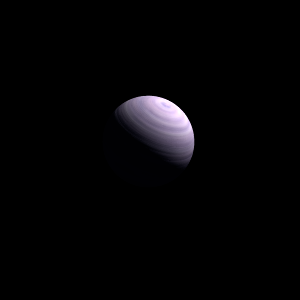|
|
Space Astro
|
Info for exoplanet "Shibopi"
| Scientific (actual) data |
|---|
| Planet | 7 CMa b |
| Planet status | Confirmed |
| Mass sini | 1.895 |
| Orbital period | 736.9 |
| Semi major axis | 1.761 |
| Orbit eccentricity | 0.055 |
| Angular distance | 0.096203 |
| Discovered | 2011 |
| Updated | 2019-10-15 |
| Omega | 116.4 |
| Tperi | 2454090 |
| K | 35.1 |
| Publication | Published in a refereed paper |
| Detection type | Radial Velocity |
| Mass detection type | Spectrum |
| Alternate names | HD 47205 b |
| Star name | 7 CMa |
| Right ascension | 99.17° |
| Declination | -19.26° |
| Mag v | 3.96 |
| Star distance | 19.75 |
| Star metallicity | 0.21 |
| Star mass | 1.52 |
| Star radius | 2.3 |
| Star sp type | K1 III |
| Star temperature | 4792 |
| Wikipedia article | 7 CMa b |
Back
| |
| Fictional info (?) |
|---|
| Suggested name | Shibopi |
| Planet type | Cold planet |
| It is named after the deity Shibopi, the bringer of chaos.
The planet telescopically displays the complete range of phases, similar to Venus and the Moon, as it moves in its inner orbit relative to 7 CMa, which reoccurs over the so-called synodic period approximately every 75 days.
As seen from 7 CMa, in a frame of reference that rotates with the orbital motion, it appears to rotate only once every two years.
Its orbital eccentricity is the largest of all known planets in its solar system; at perihelion, Shibopi's distance from 7 CMa is only about two-thirds (or 43 pct) of its distance at aphelion.
As the closest planet to Dapoki'omyo, Shibopi has been a prime target for early interplanetary exploration. |
| Atmosphere | Methane | 55% |
| Nitric oxide | 44% |
| Molecular hydrogen | 0.15% |
| Atmospheric pressure | 23 bar |
 |
| No known satellites |
| Google search for Shibopi |
|
Website by Joachim Michaelis
|
|
|
|